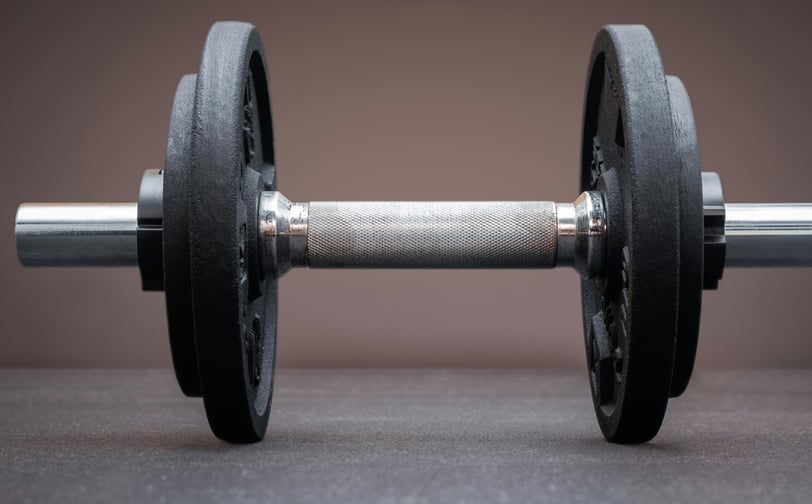Hardcore Stuff
The nuts and bolts are the same for everyone.


I recently helped a new client create a strength training program she could do on her own. She mentioned that her niece’s boyfriend was opening a fitness studio near her house. Of course, I wanted to know more.
“It’s a strength gym,” she said.
“Fantastic!”
“And he’s a personal trainer.”
"Even better!” I gushed. Then I paused. “So . . . how come you didn’t go to him?”
“Oh no.” She shook her head. “He trains strong people. They do hardcore stuff. I don’t belong there.”
“You just did hardcore stuff,” I pointed out.
She laughed, clearly skeptical.
“No, really. You did squats, bench presses, deadlifts, rows, and farmer’s walks. I guarantee you, that’s what your niece’s boyfriend is teaching people.”
Sure, my client was using lighter weights, and maybe different implements — small dumbbells instead of big barbells — but she was doing the same things the beefiest gym bros do, adjusted appropriately for her experience, preferences, and goals.
The nuts and bolts of an effective strength training program are the same for everyone. You need a squat movement — something that mimics the act of getting up and down from a chair. You can squat your own body weight, or you can hold an additional load of some sort. You can do it on one leg (think: lunge) or on a machine (think: leg press). And if your knees or hips are super cranky, or you’re a closet masochist, you can sit back against a wall, with or without added weight, supported by one leg or two, until you’d rather have a root canal than continue.
You need a hip hinge, which mimics picking something up from the floor. That “something” can be a barbell, a kettlebell, dumbbells, a stretchy band anchored under your feet — or even a soup can. And if you want to feel like a newborn flamingo, you can try this on one leg.
You need an upper body push, the functional equivalent of which might be shoving your car out of a ditch, or maybe just nudging your sofa a few feet to the left. In the gym, this could take the form of a bench press, floor press, or overhead press, using some sort of resistance. Or it could be a push-up, modified to be as easy or hard as you require.
You need an upper body pull, which might look like playing tug-of-war, or — more practically — wrestling that sofa back to its original position. Upper body pulls include pull-ups and chin-ups, which can be assisted through various means, and rowing movements, which can be performed and loaded in a mind-boggling number of ways.
And finally, in my book, you need a loaded carry so that you can haul your own grocery bags when you’re 70. This is the simplest movement of all — just pick up something heavy, in one or both hands, and walk for a while with good posture. If you’re feeling adventurous, you might hoist a lighter weight overhead and parade around like a waiter delivering a tray of drinks, or Lady Liberty toting her torch.
These five categories of exercises use basic human movement patterns to strengthen all the major muscle groups in the body. Do some variations from each category two or three times a week, and gradually make them harder over time. Add some frills for extra attention to specific body parts (biceps curls for your arms, side planks for your abs, etc.) if you like . . . or not.
This is the basic strength template for all of my clients, from the 17-year-old jonesing to get jacked to the 79-year-old navigating her senior living facility with a walker. And I’d bet my anticipated fantasy football winnings that it’s the same fundamental scheme my client’s niece’s boyfriend uses for all the strong people doing hardcore stuff at his new gym — albeit on a different scale.
Since I helped that client get going, she hasn’t needed me again. Which I'm interpreting as great news. I’m picturing her at that new gym with the strong people doing hardcore stuff. Because she belongs there, too.
